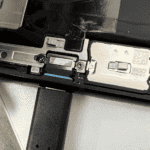Removing an Orbi satellite from your network map can be a simple process. To remove an Orbi satellite, log into your Orbi web interface, go to the Attached Devices page, find the satellite you want to remove, and click the Remove button next to its status. This method works when the satellite is disconnected or powered off.
Sometimes, you may need to take extra steps. If the Remove button doesn’t show up, try turning off the satellite first. This often makes the Remove option appear on the web interface. It’s a quick fix for those stubborn entries that won’t go away.
Keeping your network map clean helps you manage your Orbi system better. By removing old or unused satellites, you can avoid confusion and make sure your network is running as it should. Let’s look at some key points about removing Orbi satellites:
| Steps | Tips |
|---|---|
| Power off satellite | Makes Remove button appear |
| Log into web interface | Use Orbi app as backup |
| Go to Attached Devices | Look for disconnected status |
| Click Remove button | Only works for inactive satellites |
Understanding the Orbi Network Map
The Orbi network map displays your mesh system’s structure and connections. It shows how devices link to your network through the router and satellites.
Components of the Orbi Mesh System
The Orbi mesh system consists of a router and one or more satellites. The router connects to your modem and broadcasts the main Wi-Fi signal. Satellites extend this signal to cover more area.
Your Orbi router manages the network and handles internet traffic. It assigns IP addresses to connected devices. Satellites act as signal boosters, creating a seamless Wi-Fi network throughout your home.
The network map shows:
- Router location
- Satellite positions
- Connected devices
- Signal strength between components
Role of Orbi Satellites in Tri-Band Networking
Orbi satellites use tri-band technology to improve network performance. They create a dedicated backhaul channel for communication with the router.
This setup offers several benefits:
- Faster speeds
- Reduced congestion
- Improved reliability
The network map helps you visualize how satellites distribute Wi-Fi. You can see which devices connect to each satellite. This information helps optimize your network layout.
| Component | Function | Benefit |
|---|---|---|
| Router | Main Wi-Fi source | Central management |
| Satellites | Signal extension | Wider coverage |
| Backhaul | Router-satellite link | Faster communication |
Tri-band networking allows your Orbi system to handle more devices without slowing down. The network map lets you monitor this advanced setup easily.
Accessing the Orbi Interface
The Orbi interface allows you to manage your network settings and devices. You can access it through the Orbi app on your mobile device or via a web browser on your computer.
Using the Orbi App
The Orbi app offers a user-friendly way to control your network. To get started:
- Download the Orbi app from your device’s app store.
- Open the app and sign in to your Netgear account.
- Tap the menu icon (usually three lines) in the top left corner.
- Select your Orbi system from the list of devices.
The app dashboard displays your network status and connected devices. You can remove satellites by tapping the three dots next to the device name and selecting “Remove.”
Navigating the Orbi Web Interface
For more advanced options, use the web interface:
- Connect your device to your Orbi network.
- Open a web browser and enter “orbilogin.com” or your router’s IP address.
- Log in with your admin credentials.
The web interface shows a menu with various settings. To remove a satellite:
- Go to the “Attached Devices” page.
- Find the satellite you want to remove.
- Click the “Remove” button next to it.
Note: The “Remove” option only appears when the satellite is powered off.
| Access Method | Pros | Cons |
|---|---|---|
| Orbi App | Easy to use, mobile-friendly | Limited advanced options |
| Web Interface | Full control, more features | Requires computer access |
Disconnecting Orbi Satellites
Removing Orbi satellites from your network map involves a few simple steps. You’ll need to identify the connected satellites and then remove them through the Orbi web interface.
Identifying Connected Orbi Satellites
To start, log into your Orbi router’s web interface. Navigate to the Connected Devices or Attached Devices page. This page displays all devices connected to your network, including satellites.
Look for devices labeled as “Orbi” or with model numbers like RBR50 or RBS50. These are your Orbi router and satellites. Note their names or MAC addresses for easy identification.
Use this table to help identify your Orbi devices:
| Device Type | Model Number | Description |
|---|---|---|
| Router | RBR50 | Main Orbi router |
| Satellite | RBS50 | Orbi satellite unit |
Removing a Satellite from the Network Map
Once you’ve identified the satellite to remove, follow these steps:
- Power off the satellite you want to remove.
- Refresh the Attached Devices page in your Orbi web interface.
- Find the powered-off satellite in the list. Its status should show as disconnected.
- Click on the satellite’s entry.
- Look for a “Remove” or “Delete” button next to the satellite’s status.
- Click this button to remove the satellite from your network map.
If you don’t see a Remove option, try refreshing the page or waiting a few minutes. The option typically appears once the satellite is fully disconnected.
Post-Removal Steps
After removing an Orbi satellite from your network map, you need to adjust your network setup. This ensures optimal performance and coverage for your remaining devices.
Reconfiguring the Orbi Network
To reconfigure your Orbi network, start by checking the placement of your remaining devices. Ensure they are evenly spaced for the best coverage. Access your Orbi router’s admin page through a web browser or the Orbi app.
Go to the network settings and run a new setup wizard. This helps optimize your network for the updated configuration. Adjust channel settings to reduce interference between devices.
Review your network name (SSID) and password. You may want to update these for security reasons. Check that all remaining satellites are properly synced with the main router.
| Step | Action |
|---|---|
| 1 | Check device placement |
| 2 | Run setup wizard |
| 3 | Adjust channel settings |
| 4 | Update SSID and password |
| 5 | Sync remaining satellites |
Updating the Network Topology
Your network topology changes when you remove a satellite. Update your network map to reflect this change. This helps you manage your devices more effectively.
Use the Orbi app or web interface to view the updated network map. Verify that all connected devices appear correctly. If any devices are missing, try reconnecting them manually.
Check the signal strength of your remaining satellites. You might need to move them slightly to cover areas previously served by the removed satellite. Test your network speed in different areas of your home or office.
If you notice any dead zones, consider adding a WiFi extender or repositioning your existing satellites. Keep your network map updated as you make these changes to maintain an accurate view of your Orbi mesh system.
Frequently Asked Questions
Removing and managing Orbi satellites can be tricky. Here are answers to common questions about handling Orbi network devices.
What are the steps to remove a device from the Orbi network through the Orbi app?
To remove a device using the Orbi app:
- Open the Orbi app
- Tap the house icon in the top left corner
- Select your local Orbi network
- Find “Your Products” and tap the three dots next to the device
- Choose “Remove” from the options
This process removes the selected device from your network map.
How can I delete an Orbi router from my network setup?
To delete an Orbi router:
- Log in to your Orbi web interface
- Go to the “Attached Devices” page
- Locate the router you want to remove
- Click the “Remove” option next to it
After removal, you may need to resync your network if you plan to add the router back later.
What is the process for resetting an Orbi satellite to factory settings?
To reset an Orbi satellite:
- Locate the reset button on the satellite
- Press and hold the button for about 7 seconds
- Release when the LED starts flashing amber
- Wait for the satellite to reboot
This process erases all custom settings and returns the satellite to its original state.
How do you fix an Orbi satellite that is not appearing on the network map?
If a satellite isn’t showing up:
- Check the power connection
- Ensure it’s within range of the router
- Try moving it closer to the main router
- Restart both the satellite and the router
If these steps don’t work, you may need to remove and re-add the satellite to your network.
Is it possible to disconnect Orbi satellites that are not connecting properly?
Yes, you can disconnect problematic satellites:
- Access your Orbi web interface
- Go to the “Attached Devices” page
- Find the satellite that’s not connecting well
- Click “Remove” next to it
This action disconnects the satellite from your network, allowing you to troubleshoot or replace it.
Can an excess number of Orbi satellites affect network performance, and how can they be managed?
Too many satellites can slow down your network. To manage them:
- Assess your coverage needs
- Remove unnecessary satellites
- Optimize satellite placement
- Use the Orbi app to monitor performance
| Number of Satellites | Recommended Coverage Area |
|---|---|
| 1 | Up to 2,000 sq ft |
| 2 | Up to 5,000 sq ft |
| 3 | Up to 7,500 sq ft |
Adjust your setup based on your space and connectivity requirements.






